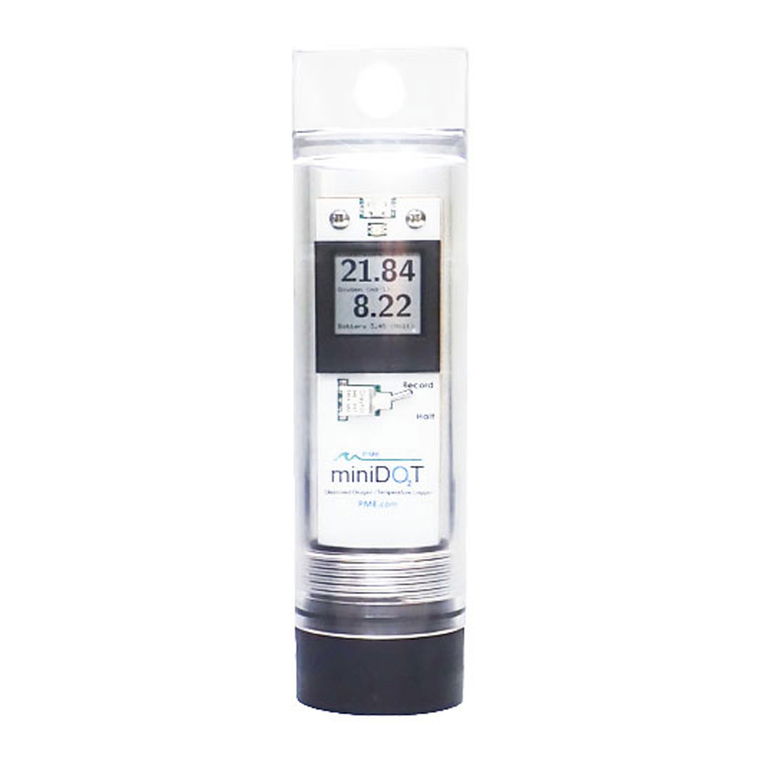
Precision Measurement Engineering, Inc.
(760) 727-0300
www.pme.com
8
Control miniDOT and Upload Files to an Android device – It is possible to control
miniDOT and to transfer your measurement files from the miniDOT Logger to your Android
device. This operation has 3 prerequisites.
1. An Android device equipped with USB On-The-Go (OTG) feature and one that can act as
a USB host. OTG is a feature for most modern Android devices that allow them to act as
a USB host. OTG was introduced with Android version 3.1 and should be a useable
feature for most devices. It is still possible that your device doesn't support OTG or that it
does support OTG but will either not see miniDOT as a local drive or will not control
miniDOT. Please test your device with a miniDOT Logger prior to attempting to upload
while in the field.
2. A USB OTG cable. This is essentially an adapter with a micro USB connector on one end
that connects to your Android device and a standard A type USB plug on the other. The
cable supplied with the miniDOT Logger connects to this end.
3. A "File Explorer" app downloaded on your Android device. These types of apps assist
with being able to view and move files from device to device. "ES File Explorer" is a free
app available on the Google app store and is recommended for use with the miniDOT
Logger. Samsung products have their own file explorer called "MyFiles".
If the 3 requirements are met, then connect the miniDOT Logger to your Android device. You
should see the miniDOT Logger’s green connection light come on and your Android device
will display a message about "preparing USB storage". When "USB storage ready" is shown,
then use your "file explorer" program to move your data from the miniDOT Logger onto your
Android device. You will later use the device to move the file to a new location via internet or
possibly move the file onto plugged SD card storage.
miniDOT can be controlled by using a PME app. This can be downloaded from Google Play
Store. Search for "pmecontrolapp". Download. The app is free. After the app is
downloaded just plug miniDOT into the device. This will bring up the app. There may be
some confusion at plug in time since the app comes up but also the system file explorer may
appear. The app will appear requesting a sample interval be entered. If not entering an
interval touch Done to make the entry pad disappear. The app will scold you for not entering
a valid sample interval. Ignore this. The sample interval within miniDOT will be unchanged
and appears in the app.
Again, it is highly recommended that you try these operations prior to depending upon this in
the field. Not all devices that support OTG will communicate with miniDOT.
Currently the associated miniDOT Logger programs miniDOTPlot, and miniDOTConcatenate
are not supported on the Android devices.
1.3 Overview General Maintenance
Cleaning the Sensing Foil –The sensing foil can be cleaned at regular intervals depending
on the fouling condition at the site. The cleaning procedure of the sensing foil should be done
with caution so that the protective coating is not removed. If the fouling is calcareous it can
normally be dissolved with household vinegar.




























